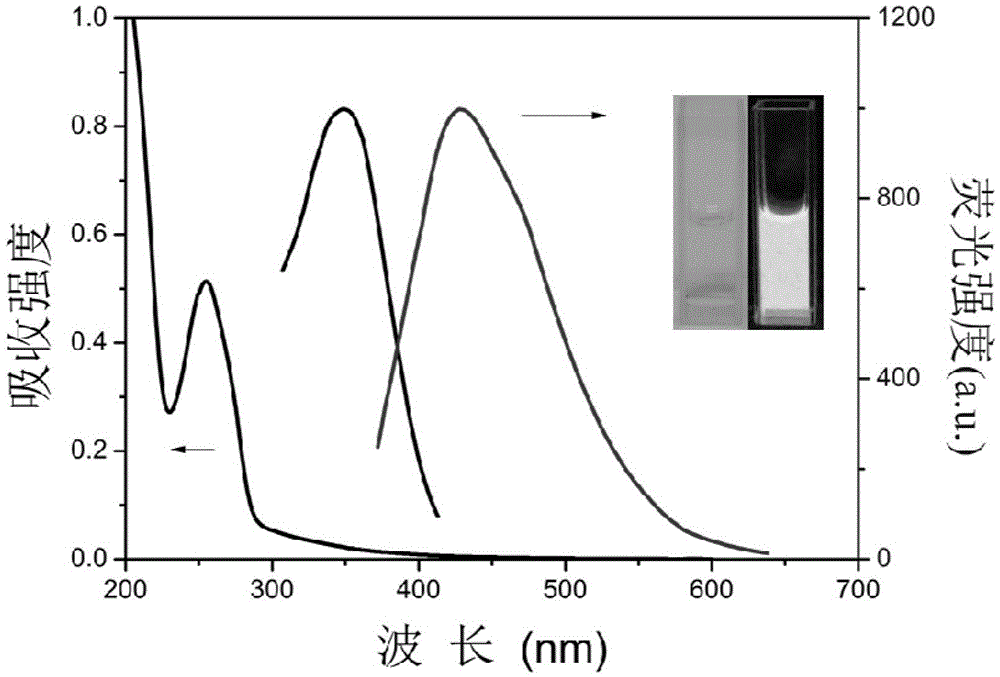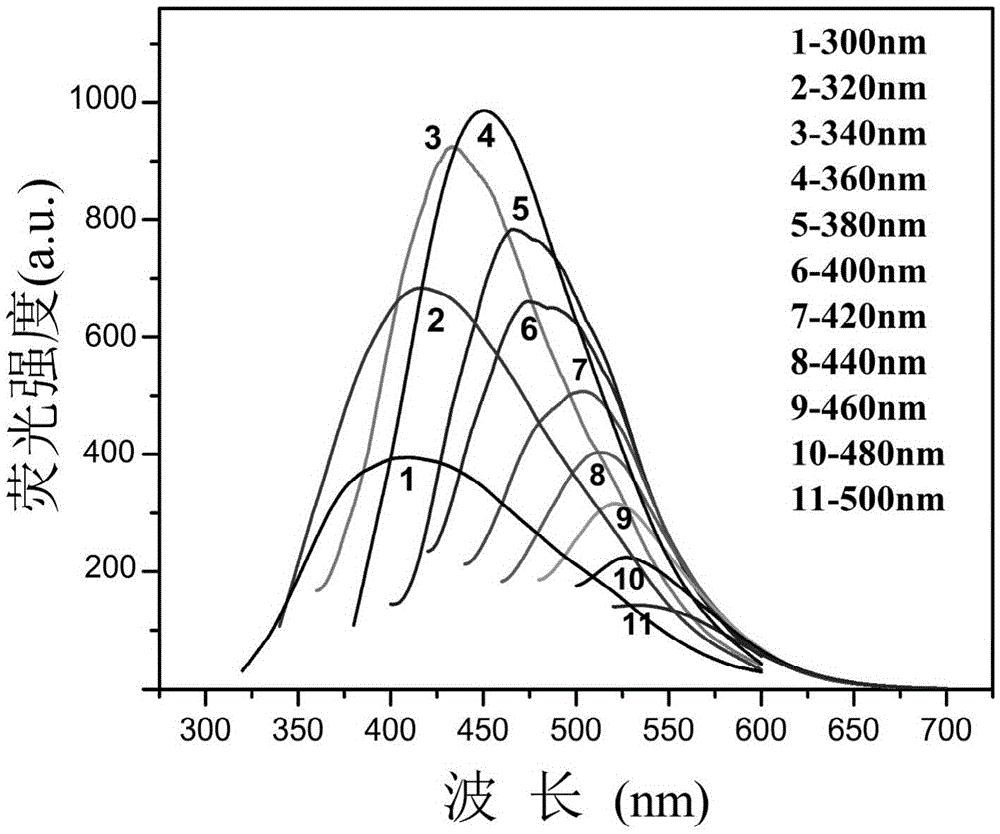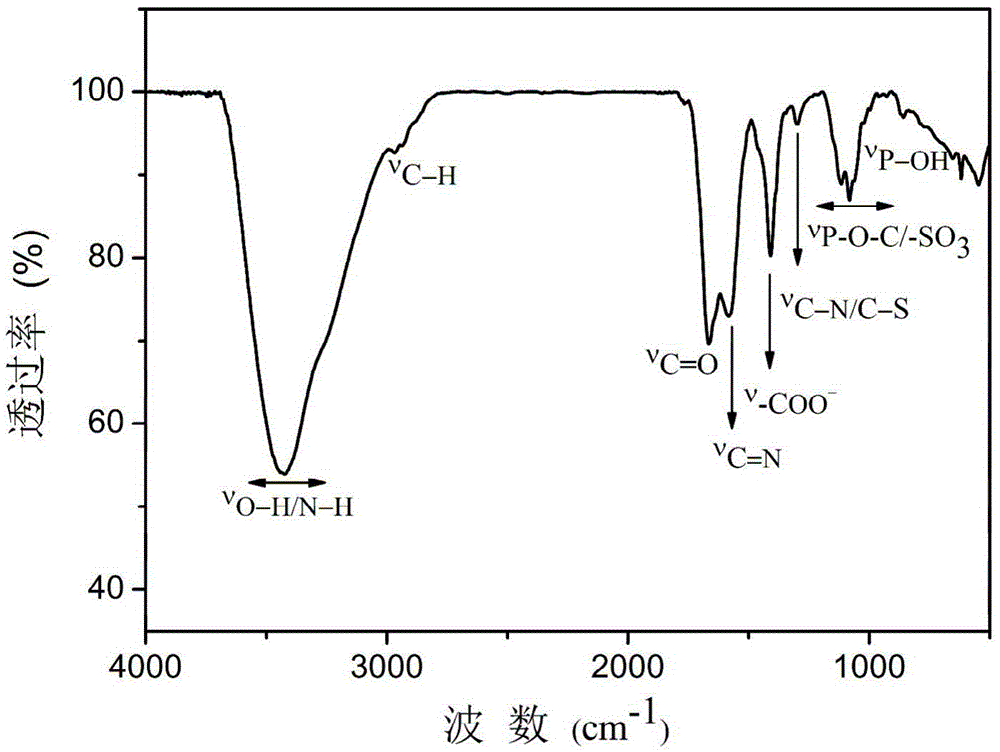N, P and S-codoped fluorescent carbon quantum dot and preparation method and application thereof
A carbon quantum dot, co-doping technology, applied in fluorescence/phosphorescence, chemical instruments and methods, nano-optics, etc., can solve the unfavorable continuous and large-scale production of carbon quantum dots, carbon quantum dots with low fluorescence quantum yield and non-renewable. Energy and other issues, to achieve the effects of green price, good solubility and dispersibility, and stable optical properties
- Summary
- Abstract
- Description
- Claims
- Application Information
AI Technical Summary
Problems solved by technology
Method used
Image
Examples
Embodiment 1
[0033] Preparation of N, P, S co-doped carbon quantum dots:
[0034] Step 1, weighing 0.5g of dry yeast and adding 10mL of deionized water to obtain a dispersed aqueous solution;
[0035] Step 2, transfer the mixed solution obtained in step (1) to a hydrothermal reaction kettle, and conduct a hydrothermal reaction at 240° C. for 8 hours;
[0036] Step 3, centrifuge the product obtained in step (2) at a speed of 6000r / min for 10min, and then dialyze it for 3 days with a dialysis bag with a molecular weight cut-off of 500-1000Da to finally obtain N, P, S co-doped carbon quantum Dot the solution. Its relative quantum yield (based on quinine sulfate) is 12.54%.
[0037] Characterization and application see Figure 1-10 .
Embodiment 2
[0039] Preparation of N, P, S co-doped carbon quantum dots:
[0040] Step 1, weighing 0.5g of dry yeast and adding 10mL of deionized water to obtain a dispersed aqueous solution;
[0041] Step 2, transfer the mixed solution obtained in step (1) to a hydrothermal reaction kettle, and conduct a hydrothermal reaction at 240° C. for 12 hours;
[0042] Step 3, centrifuge the product obtained in step (2) at a speed of 6000r / min for 10min, and then dialyze it for 3 days with a dialysis bag with a molecular weight cut-off of 500-1000Da to finally obtain N, P, S co-doped carbon quantum Dot the solution. Its relative quantum yield (based on quinine sulfate) is 12%.
Embodiment 3
[0044] Preparation of N, P, S co-doped carbon quantum dots:
[0045] Step 1, weighing 0.5g of dry yeast and adding 10mL of deionized water to obtain a dispersed aqueous solution;
[0046] Step 2, transfer the mixed solution obtained in step (1) to a hydrothermal reaction kettle, and perform a hydrothermal reaction at 160° C. for 12 hours;
[0047]Step 3, centrifuge the product obtained in step (2) at a speed of 6000r / min for 10min, and then dialyze it for 3 days with a dialysis bag with a molecular weight cut-off of 500-1000Da to finally obtain N, P, S co-doped carbon quantum Dot the solution. Its relative quantum yield (based on quinine sulfate) is 6.82%.
PUM
 Login to View More
Login to View More Abstract
Description
Claims
Application Information
 Login to View More
Login to View More - R&D
- Intellectual Property
- Life Sciences
- Materials
- Tech Scout
- Unparalleled Data Quality
- Higher Quality Content
- 60% Fewer Hallucinations
Browse by: Latest US Patents, China's latest patents, Technical Efficacy Thesaurus, Application Domain, Technology Topic, Popular Technical Reports.
© 2025 PatSnap. All rights reserved.Legal|Privacy policy|Modern Slavery Act Transparency Statement|Sitemap|About US| Contact US: help@patsnap.com



